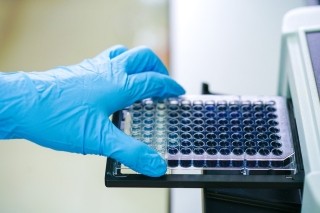By Aaron Miller-
A team of Stanford Medicine scientists has developed a test to detect antibodies against the novel coronavirus, SARS-CoV-2, in blood samples.
In contrast to current diagnostic tests for COVID-19, which detect genetic material from the virus in respiratory secretions, this test searches for antibodies to the virus in plasma, the liquid in blood, to provide information about a person’s immune response to an infection.
The test was launched earlier in the week at Stanford Health Care and takes two to three days for results, The Eye Of Media.Com has heard. The initiative has been led by Scott Boyd, MD, PhD, associate professor of pathology and a leading expert in antibody research. He said:
“It’s essential to have the right tools to understand the biology of the novel coronavirus,” said Lloyd Minor, MD, dean of the Stanford University School of Medicine. “This test takes us one step closer to answering the many public health questions about COVID-19.”
“Serological testing gives us a more comprehensive view of what’s happening in an individual who is infected, or has been infected, with the virus,” agreed Thomas Montine, MD, PhD professor and chair of pathology at the School of Medicine . The Stanford test detects two different types of antibodies: IgM antibodies, which are made early in an immune response and whose levels usually quickly wane, and IgG antibodies, whose levels rise more slowly after infection but usually persist longer.
“There’s limited data out of China and Europe showing that this appears to be the response pattern followed with this virus,” Montine said. “But no one has had this long enough to know how long after infection the antibodies persist.” Test results will be reported in two parts: Positive or negative for IgM antibodies, and also positive or negative for IgG antibodies.
The Stanford team say they have focused on ensuring they can manufacture large quantities of the reagents needed, especially the receptor binding domain of the SARS-CoV-2 spike protein, and validating the test. They have validated the test using samples from patients who tested positive for SARS-CoV-2 on tests that detect viral genetic material, as well as plasma samples known to be negative because they were collected more than two years ago.
Stanford experts are now determining who will receive the serology test, and want to expand testing capacity.
“We’ve built sufficient inventory to support the test for at least six months,” Montine said. “We’re currently limited by the number of robots we have to run the test. We’re looking for more of them, but they’re not easy to buy right now. Ultimately, we aspire to provide serological testing to as many people in Northern California as we can.”
.Measuring antibody levels in those who have not been severely ill is expected to determine how common mild infections are in the general population. The test can also be used to help show whether someone with antibodies is protected against reinfection, and if so, for how long. Understanding the immune response to the virus could also help inform when it is safe for individuals to return to normal activity.
Treatment
An early scientific report published recently in JAMA suggests that convalescent plasma — collected from the blood of people recovering from the disease and containing anti-SARS-CoV-2 antibodies — could help treat people with acute COVID-19. If these results are borne out in larger studies, serology testing will be a key approach for identifying people with antibodies who could donate blood to treat current patients.
“That approach could be very important in this period when we don’t have vaccines or other definitive therapies,” Montine said.
Developing the new test required close collaboration by experts across many Stanford departments. “This was an amazing team effort,” he said.
Image: Choksawatdikorn/Shutterstock.com

